Why did Asian COVID-19 pandemic get worse and cause millions of deaths?
- Normal Liver Cells Found to Promote Cancer Metastasis to the Liver
- Nearly 80% Complete Remission: Breakthrough in ADC Anti-Tumor Treatment
- Vaccination Against Common Diseases May Prevent Dementia!
- New Alzheimer’s Disease (AD) Diagnosis and Staging Criteria
- Breakthrough in Alzheimer’s Disease: New Nasal Spray Halts Cognitive Decline by Targeting Toxic Protein
- Can the Tap Water at the Paris Olympics be Drunk Directly?
Why did Asian COVID-19 pandemic get worse and cause millions of deaths?
- Should China be held legally responsible for the US’s $18 trillion COVID losses?
- CT Radiation Exposure Linked to Blood Cancer in Children and Adolescents
- FDA has mandated a top-level black box warning for all marketed CAR-T therapies
- Can people with high blood pressure eat peanuts?
- What is the difference between dopamine and dobutamine?
- How long can the patient live after heart stent surgery?
Why did Asian COVID-19 pandemic get worse and cause millions of deaths?
According to Reuters statistics, as of March 11 , the number of deaths from the COVID-19 in Asia exceeded the 1 million mark, accounting for about 16% of the cumulative global death toll .
The total population of Asia accounts for more than half of the global population, and the epidemic in this region has attracted much attention.
In fact, many Asian countries are experiencing the largest wave of infections since the outbreak of the virus due to the mutated strain of Omicron, and the number of new deaths in some countries is also on the rise, causing vigilance.
In other countries, the peak of the epidemic has passed, and epidemic prevention policies are being gradually adjusted.
Omicron infection in South Korean and Japan reached the peak and Daily death toll hits record
In East Asia, Omicron is triggering a new wave of infection peaks, with newly confirmed cases and new deaths in South Korea, Japan and other countries setting new records.
South Korea is currently the fastest growing country in the world. According to Yonhap News Agency, on March 13 , South Korea reported 350,190 new confirmed cases of the COVID-19 , the second consecutive day that the number of confirmed cases exceeded 350,000 . A day earlier, South Korea reported 380,000 new confirmed cases , the highest since the outbreak began.
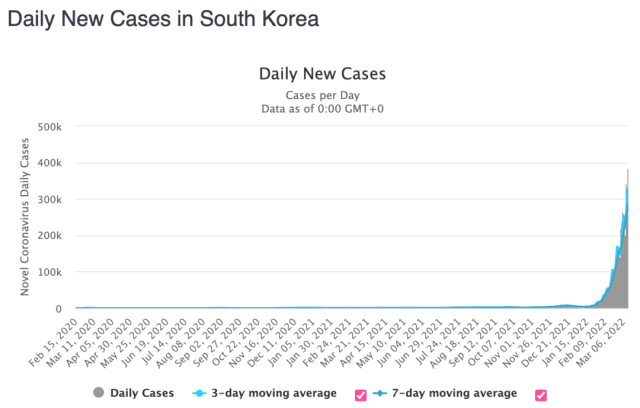
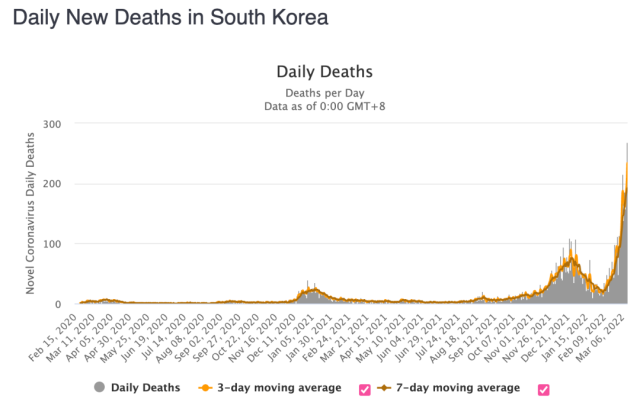
Reuters’ real-time epidemic statistics show that South Korea has the highest daily average of new confirmed cases in the past seven days, accounting for one-sixth of the world’s daily new confirmed cases.
Yonhap News Agency reported that the mutant strain of Omicron is spreading in South Korea at an alarming rate, and the daily increase in confirmed cases continues to break records. On March 12 , the cumulative number of confirmed cases in South Korea exceeded 6 million, reaching more than 6.2 million, only 3 days have passed since the breakthrough of 5 million.
The country’s death toll also hit a streak of new highs, hitting a record 269 on March 12 . As of March 13 , the cumulative number of confirmed cases in South Korea reached 6.55 million , and the cumulative number of deaths was 10,395 .
South Korean health officials said on the 11th that this wave of Omicron infections in South Korea is expected to peak in the next few weeks, when the average daily infection cases may surge to 370,000 . While the epidemic is spreading rapidly, severe cases of the COVID-19 in South Korea may surge in late March and early April .
In Japan, in early February this year , Japan ushered in the largest wave of infections since the outbreak, when the daily increase in confirmed cases reached a record 100,000 . Since March , the epidemic in Japan has gradually eased, but the current daily increase in confirmed cases is still at a high level.
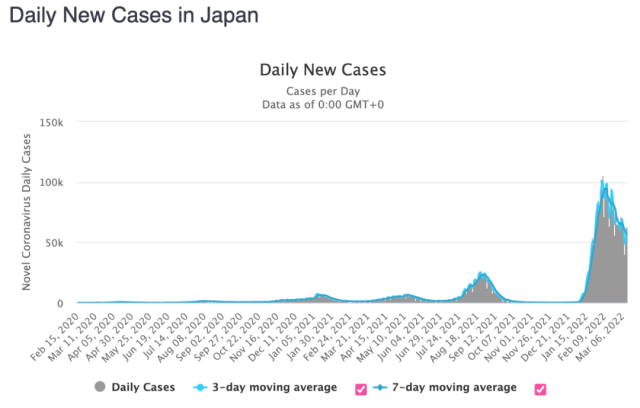
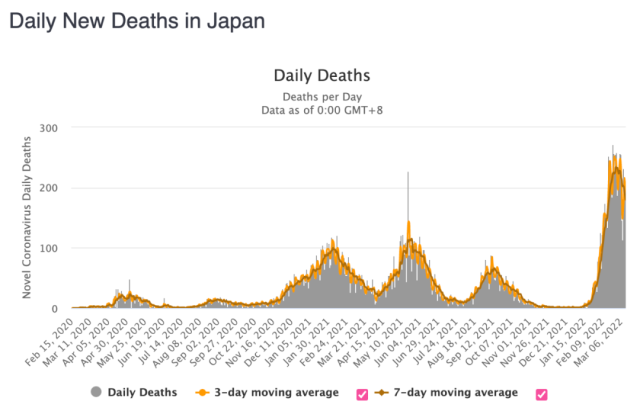
According to the Japan Broadcasting Association ( NHK ), on March 13 , Japan reported 55,000 new confirmed cases and 141 new deaths . Japan’s daily death toll is at its peak , hitting a record 272 on February 23 . As of March 12 , Japan had a total of 5.73 million confirmed cases and 26,000 deaths .
18 regions in Japan are still under a quasi-emergency state, including the capital Tokyo and other places. NHK reported that the quasi-emergency state in these areas will expire on March 21 , and a government source said the restrictions in most areas will be lifted as scheduled.
In China, according to the National Health Commission, from 0 to 24:00 on March 12 , 31 provinces (autonomous regions and municipalities) and the Xinjiang Production and Construction Corps reported 1,807 new local confirmed cases and 1,315 new local asymptomatic infections . No new deaths were reported.
As of 24:00 on March 12 , there were 7,230 confirmed cases in 31 provinces (autonomous regions and municipalities) and the Xinjiang Production and Construction Corps (including 6 severe cases ).
Southeast Asian countries still at the peak of COVID-19 pandemic, but began to open borders
In Southeast Asia, the epidemic situation in Vietnam and Malaysia is still spreading rapidly. Although the epidemic situation in Singapore, Thailand and other countries shows signs of easing, it is still at its peak. However, some countries are planning to gradually open their borders.
The epidemic in Vietnam is at its peak. According to a report by Vietnam News Agency on the 12th , there were 168,719 new confirmed cases in the country in the past 24 hours , involving 63 provinces and cities across the country. In addition, 195,000 additional confirmed cases were reported in Hanoi, the capital , 33,760 additional cases were reported in Hung An Province, and 20,784 additional cases were reported in Phu Thou Province .
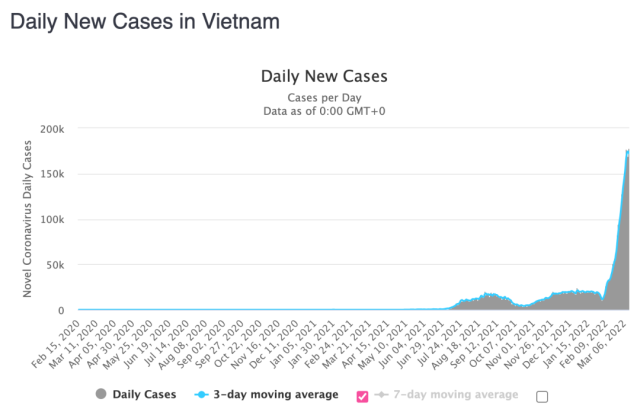
As of that day, Vietnam has reported more than 5.9 million confirmed cases, of which more than 5.89 million have been added since the fourth wave of the outbreak in April 2021 . Vietnam has reported a total of 41,000 deaths .
The Vietnamese government previously announced that Vietnam will reopen to international tourists on March 15 , local time. However, in the face of the still-spreading outbreak, what new rules will be imposed on those entering the country have yet to be determined.
Malaysia reported 26,000 new confirmed cases and 77 new deaths on March 13 . The country is in the midst of its worst wave since the outbreak began. In the past few days, the number of daily confirmed cases in the country has exceeded 30,000 in a row , setting a record for daily confirmed cases.
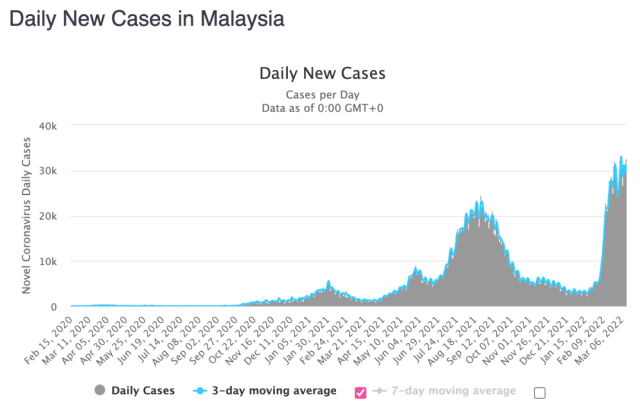
According to reports, Malaysia will open its borders on April 1 and move into the transition phase from the COVID-19 pneumonia epidemic to an endemic epidemic.
Thailand is also in the midst of a new wave of outbreaks. According to the “Bangkok Post” report, on March 13 , Thailand reported 23,584 new confirmed cases and 66 new deaths . As of that day, Thailand has reported more than 3.18 million confirmed cases and 23,000 deaths .
Since the outbreak of the COVID-19 epidemic, Thailand has experienced two waves of epidemic peaks, namely the Delta infection wave in August last year and the Omicron infection wave in February and March this year . On February 26 , Thailand recorded a record 25,615 new confirmed cases in a single day .
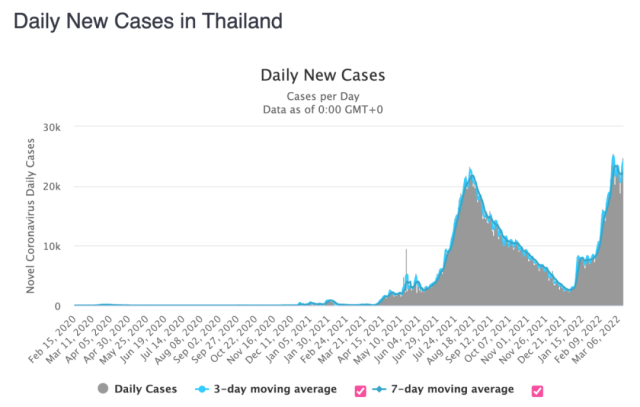
Thailand’s Deputy Prime Minister and Minister of Health Anutin said on March 9 that Thailand’s National Infectious Disease Commission has agreed in principle to consider the COVID-19 pneumonia as an endemic disease.
Singapore ushered in the peak of the epidemic in late February , when the number of daily confirmed cases exceeded 20,000 . Since March , the epidemic in Singapore has gradually eased, but the single-day increase is still at a high level.
According to Channel News Asia’s report on the 12th, as of noon on March 12 , Singapore had 12,632 new confirmed cases and 10 new deaths in the past 24 hours .
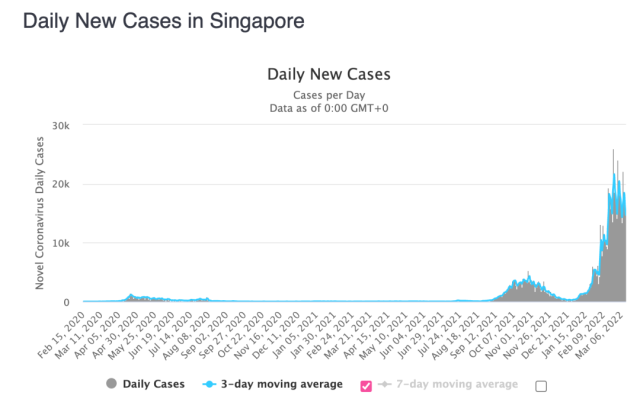
Singapore Parliament passed the COVID-19 Pneumonia (Temporary Measures) (Amendment) Bill on March 11 , extending the relevant control order for one year to April 2023 . Xu Baokun, Senior Minister of State for the Ministry of Health of Singapore, said that the epidemic is not over yet, and a new wave of epidemics and new mutant strains may still appear again.
India, Indonesia, Philippines have passed the peak of pandemic
After some Asian countries experienced a wave of infections in Omicron in January this year , the epidemic has gradually eased.
The number of confirmed cases in Indonesia is continuing to decline. In February this year, with the spread of the mutant strain of Omicron, the epidemic in Indonesia ushered in a peak. At that time, there were more than 60,000 confirmed cases per day . Indonesia’s outbreak has eased in recent weeks. On March 12 , the country reported 14,000 new confirmed cases .
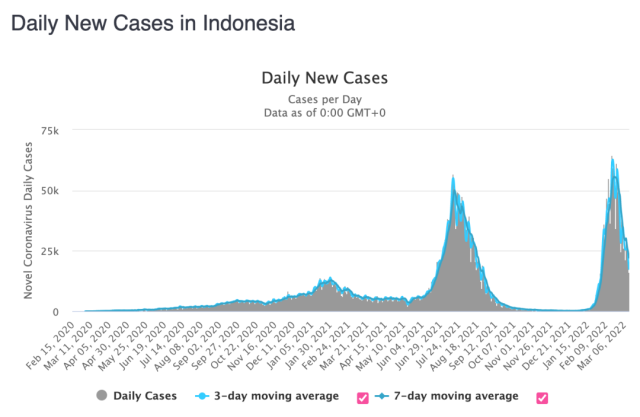
However, the “Jakarta Post” reported that although the number of newly confirmed cases in Indonesia has shown a downward trend, the daily increase in deaths is still at a high level, which is worrying.
In the Philippines, the country ushered in the peak of the epidemic in January this year, when the number of newly confirmed cases in a single day reached a maximum of 39,000 . But since March 2 , the number of daily confirmed cases in the country has been below 1,000 . On March 12 , there were 655 new confirmed cases in the country .
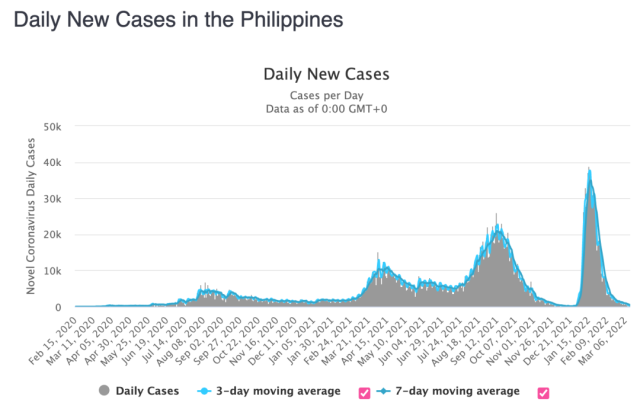
Philippines eased entry controls for foreign tourists from February 10 to promote tourism recovery. According to statistics, more than 73,000 foreign tourists have entered the Philippines in the month from February 10 to March 10 .
In South Asia, India, which ranks second in the world in terms of cumulative confirmed cases, has also eased the epidemic recently.
According to a report by the Times of India on the 13th , the country reported 3,116 new confirmed cases that day , the lowest number in the past two years. As of that day, India had reported a total of 42.99 million confirmed cases and 510,000 deaths – accounting for more than 50% of the cumulative deaths in Asia .
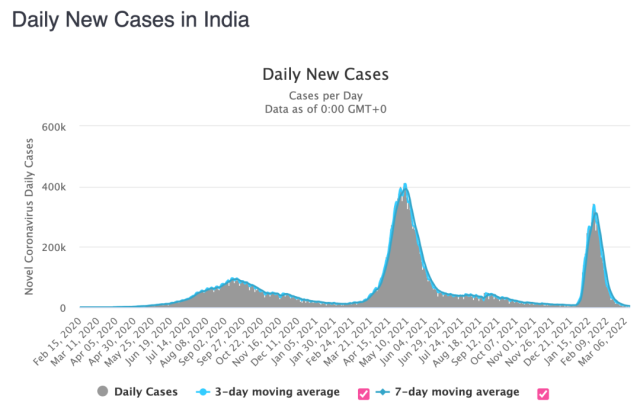
India ushered in the peak of Omicron infection in late January this year, when the average number of newly confirmed cases exceeded 300,000 in a week . However , since the end of February and the beginning of March, the daily increase in confirmed cases in the country has remained below 1,000 and has continued to decline.
The epidemic situation in Bangladesh, Pakistan and other countries in South Asia has also eased, and there are currently hundreds of daily confirmed cases. Countries such as Israel, Jordan, Lebanon and other countries in West Asia where the epidemic was more severe before, as well as Kazakhstan and other countries in Central Asia, have also passed the peak of the epidemic.
Why did Asian COVID-19 pandemic get worse and cause millions of deaths?
(source:internet, reference only)
Disclaimer of medicaltrend.org
Important Note: The information provided is for informational purposes only and should not be considered as medical advice.



